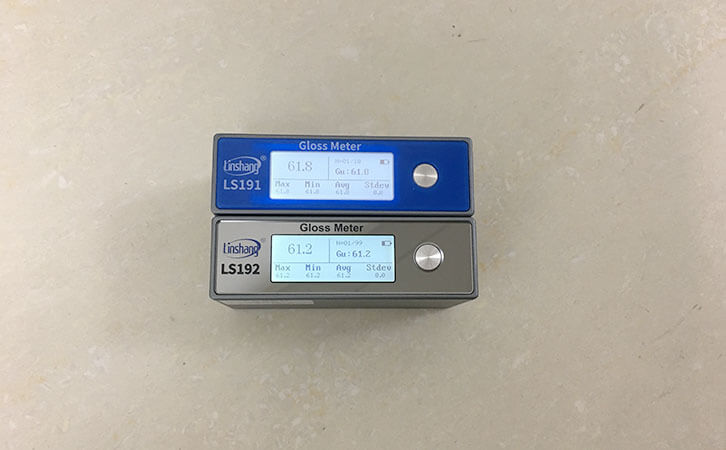What Factors will Affect Paint Gloss?
Paint is actually a commonly used industrial raw material. In normal production and life, it will adhere to the surface of objects in different ways, forming a thin film with strong adhesion, certain strength and long-term solid state. It is also called coating or paint film, paint coatings are usually composed of film-forming substances, fillers (paints and fillers), solvents, additives, etc. The test paint gloss can be measured with a paint gloss meter.
The paint gloss meter can be used for the outer surface glossiness of paints, coatings, inks, plastics, paper, tiles, ceramics, stone, metals and electroplated layers. The principle of the paint gloss meter is also to test reflected light. Test to evaluate the external surface gloss is a visual impression, under the same lighting conditions, the more light reflected by the surface paint, the better the paint gloss. The paint can also be directly tested by the paint gloss meter. In the detection process, we must pay attention to the operation method. Some condition errors may lead to inaccurate measurement results, so we should avoid this situation during the use of the paint gloss meter. So here is a brief introduction to some factors that may affect the measurement of the paint gloss meter.
The following factors affect the measurement of paint glossiness:
When the binder ratio is fixed, the greater the oil absorption of the pigment, the lower the gloss when measured with a paint gloss meter.
The binder ratio in the paint has a certain influence on the paint gloss, because the size of the pigment particles present in the paint film weakens the mirror reflection to a certain extent, resulting in a decline in gloss.
The particle size of the pigment in the paint and the diffusivity of the paint will affect the gloss measured by the paint gloss meter. The finer the fineness of the pigment, the better the evenness of diffusion in the base material, which helps to form a flat and smooth paint film.
Various pigments also have their own properties. They have different levels of light absorption and reflection. For example, take the black paint and white paint as an example, because black paint absorbs light completely and white paint reflects light completely. So black paint shows higher gloss than white paint.
The paint gloss surface is measured with a paint gloss meter. The influencing factors are not only the flatness and frizziness of the paint surface, but also the light irradiation angle will affect the gloss. The greater the incident angle, the higher the reflected light intensity.
The type of solvent used in the paint when tested with a paint gloss meter directly affects the speed of its volatilization rate.
In summary, the above is a summary of the factors that may affect the paint gloss. When using the paint gloss meter to measure the gloss, you must fully consider these factors. If there are errors in the measurement, customers may be dissatisfied with us.
